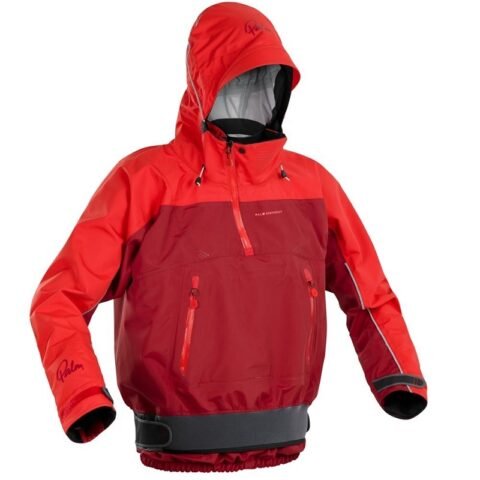When it comes to kayaking, there are different types of kayaks and activities that can impact how wet you’ll get.
If you’re into whitewater kayaking, you’re almost guaranteed to get completely soaked. If you prefer flatwater kayaking or dry-top kayaking, you might be able to stay relatively dry.
Dry top kayaking refers to the use of a specialized jacket that keeps your upper body dry while allowing water to run off the lower part of your body.
We’ll discuss some tips for staying dry while kayaking, including using a dry top and other equipment.
Will You Get Wet While Kayaking?
Yes, you will likely get wet while kayaking. The extent of how wet you’ll get can depend on various factors, such as the type of kayaking you’re doing and the equipment you’re using.
Using a spray skirt can help protect your lower body from water drips, but you may still get splashed on your hands and arms. Paddling with a high-angle stroke can increase your chances of getting wet as well.
While there are ways to minimize the amount of water you encounter, it’s best to plan on getting at least a little wet every time you go kayaking.
Where Will You Get Wet?
Your hands and arms are the most likely parts of your body to get wet while kayaking. As you paddle, water droplets will inevitably splash onto your hands and arms.
If you’re using a spray skirt, you can protect your lower body from any water that drips off your paddle.
The act of paddling creates an easy path for water to soak your clothes and enter the kayak.

However, there are ways to minimize getting wet.
For example, you can use a paddle with drip guards or install drip rings on the shaft of the paddle. These accessories will help keep water from dripping onto your lap or legs.
What Can You Do to Stay Dry?
While you can’t completely avoid getting wet while kayaking, there are things you can do to minimize the amount of water that comes into contact with your body.
Here are a few tips:
Choose the right gear.
Wear quick-drying clothing and a waterproof jacket. It’s also a good idea to wear water shoes or sandals instead of sneakers, which can become waterlogged and heavy.
Use a spray skirt.
A spray skirt is a piece of gear that covers the opening of the kayak and helps keep water from entering. Make sure the spray skirt fits properly and is adjusted correctly.
Paddle smoothly.
As mentioned earlier, paddling gently and smoothly will create fewer waves and splashes.
Use drip guards or rings.
Drip guards are small pieces of plastic that attach to the paddle and help keep water from running down the shaft and onto your lap. Drip rings attach to the shaft of the paddle and create a barrier to prevent water from running down.
Kayaking in Wet Conditions
Kayaking in the rain can be an exhilarating experience, but it’s important to be prepared.
Wear a waterproof jacket and make sure your gear is packed in a dry bag. It’s also a good idea to bring a change of clothes and a towel.
If you capsize while dry top kayaking, don’t panic.
Remember to stay with your kayak and paddle to shore if possible. If you’re in a group, make sure everyone is accounted for and has a way to get warm and dry.
Kayaking in wet conditions can be a fun experience if you’re prepared and take the necessary precautions. Don’t let the fear of getting wet keep you from enjoying this exciting outdoor activity. Embrace the water and have fun!



